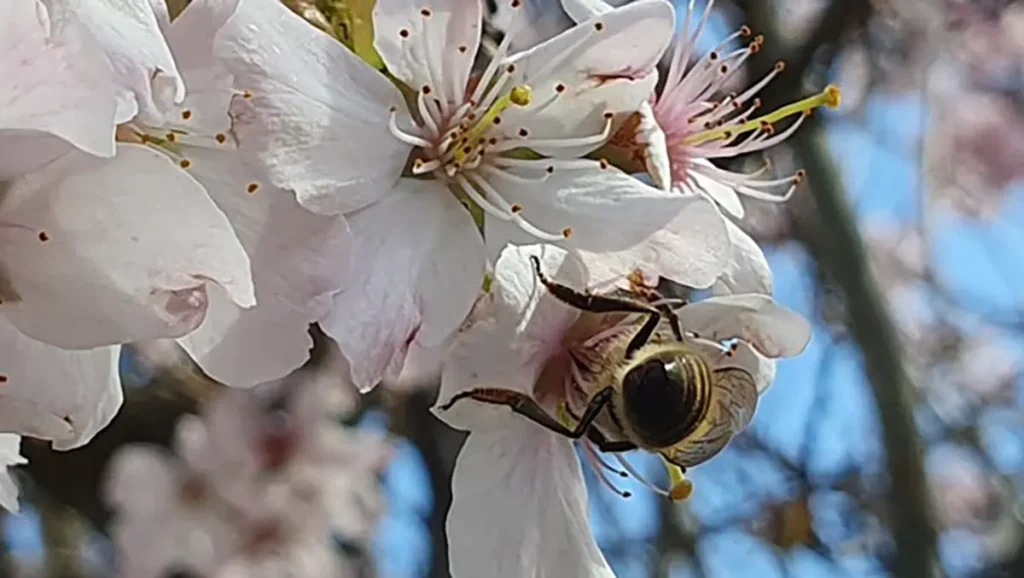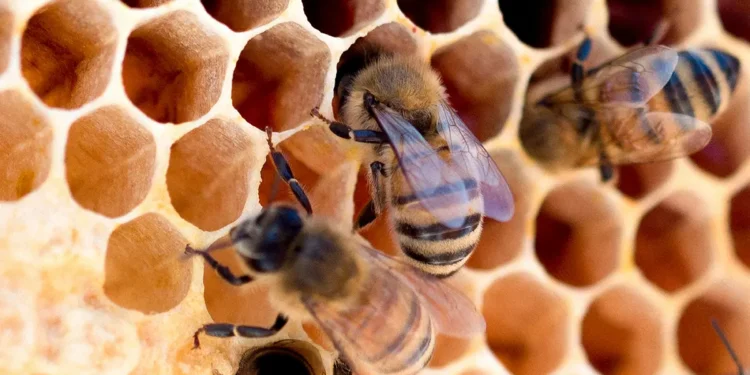As the gentle warmth of spring graces the landscape, a vibrant hum resonates through the air, signalling the start of an exciting season for our invaluable pollinators—the honey bees. In Bees Buzzing into Spring, we look at this crucial period characterised by the emergence of blossoms on trees and the meticulous orchestration within the bee colonies to expand their numbers. Beekeepers play a vital role during this time, ensuring that these industrious creatures have ample provisions to sustain their colonies.
The Impact of Climate Change on Bee Behaviour
However, the spectre of climate change casts a shadow over this delicate dance of nature. Warm, wet winters, driven by climate change, have altered the bees’ behaviour. Unlike in colder winters where bees conserve food stores, these milder conditions lead to increased activity, resulting in a quicker depletion of stored food. The challenge lies in bridging the gap between winter and the forthcoming nectar flows in April and May.
Supporting Bees Through Changing Climates
Beekeepers step in to support their buzzing charges by providing fondant sugar for carbohydrates and pollen patties for protein. This balanced diet is crucial for the bees’ survival and sets the stage for a successful year ahead. The changing climate poses a threat, underscoring the need for adaptable strategies to safeguard these essential pollinators.
The Queen’s Role in Spring Population Surge
Spring marks the queen’s orchestration of a population surge within the colony. Honey bees, with their ability to store food, take the lead among pollinators. The queen lays eggs, and the bees diligently gather pollen to nourish the growing brood. This early activity positions honey bees as the first pollinators on the scene, a notable advantage over their counterparts like bumblebees, which require time to establish nests and raise broods.
The burgeoning workforce within the honey bee colony is truly remarkable. From a winter population of around 10,000, the colony blossoms to boast 60,000 worker bees and approximately 2,000 drones. This formidable army gears up for the impending nectar flows, capable of producing up to 25kg of honey in a season and covering an astonishing 55,000 miles—a testament to their unwavering dedication.

The Threat of the Invasive Asian Hornet
Yet, amidst the buzz of spring, a dark cloud looms in the form of the invasive Asian (Yellow Leg) Hornet. This unwelcome species has infiltrated Europe and is making its way towards our shores. With 72 confirmed nests destroyed last year and more anticipated this year, vigilance is paramount. The Asian Hornet poses a severe threat, consuming 25kg of pollinating insects per nest, putting immense pressure on our delicate ecosystem.
Enter the Asian Hornet Watch app—a powerful tool in our arsenal against this invasive menace. Citizens are urged to report sightings through the app, providing valuable data for the dedicated Asian hornet team. A simple photo can confirm a sighting, and each report aids in locating and destroying nests, preventing the release of up to 500 queens into our countryside.
Community Efforts in Monitoring and Reporting
For those keen on contributing further, placing a feeding station in your garden becomes a simple yet impactful action. Vigilantly monitoring for visiting hornets and updating the app with observations can play a crucial role in curbing the spread of this threat. Detailed information on setting up feeding stations can be found on the BBKA website.
A United Front Against Threats to Pollinators
As we embrace the wonders of spring, let us stand united in nurturing our honey bees and fortifying our defences against the encroaching threat of the Asian Hornet. Together, we can ensure the continued vitality of our precious pollinators and the delicate balance of our natural world.










